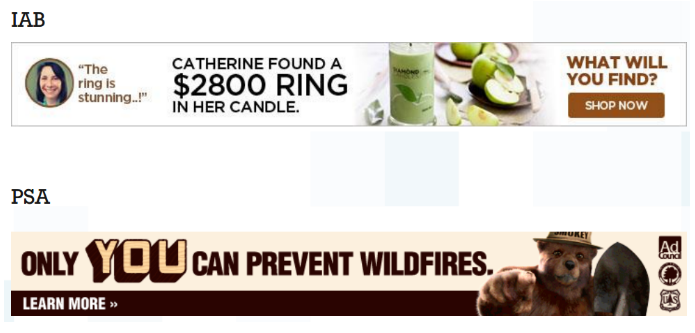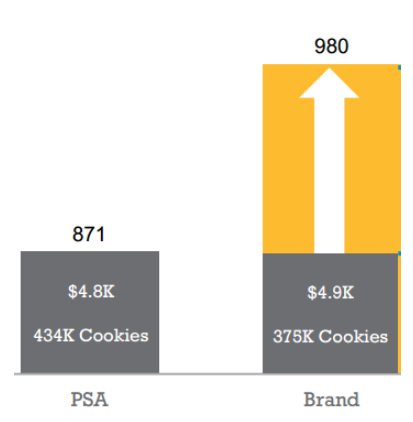As competition intensifies, a great example of a crowded SaaS digital marketing space is the web accessibility platform. In today’s post, we’re going to dive into this competitive digital space where a few major players are fighting for leads using the obvious digital ad platforms and other demand gen strategies.
In today’s digital world, ensuring that websites and applications are accessible to all users, regardless of their abilities, has become a critical component of successful online businesses. As the global population becomes increasingly diverse and digitally connected, web accessibility platforms are rapidly gaining prominence. These platforms enable businesses to comply with accessibility guidelines and create inclusive online experiences for users with disabilities.
The web accessibility platform space is dominated by several key players, each striving to provide the best solutions for businesses looking to make their digital assets accessible to all. Some of the most notable names in the industry include AudioEye, AccessiBe, UserWay, and Siteimprove, among others. These companies offer a range of tools and services to help businesses achieve compliance with accessibility standards such as the Web Content Accessibility Guidelines (WCAG) and Section 508 of the Rehabilitation Act.
These platforms are typically geared towards decision-makers in various industries, such as marketing managers, IT directors, and business owners, who are responsible for ensuring their digital assets are accessible and compliant with accessibility regulations. In addition, these platforms are designed to cater to diverse sectors, including retail, healthcare, education, and government organizations, among others.
As the demand for web accessibility continues to grow, companies in this space are constantly innovating and refining their offerings to help businesses create accessible and inclusive digital experiences for all users.
Consider, for example, this fierce battle for Google brand name searches:

AudioEye can implement several strategies to protect its brand name and improve its ranking on Google Ads when its competitor AccessiBe is ranking first for “AudioEye” brand name searches:
1. Bid on branded keywords: Start bidding on “AudioEye” and related branded keywords to ensure that AudioEye ads appear above AccessiBe’s ads. Branded keywords tend to have a lower cost per click, so this can be an effective way to push competitors down in the ad rankings.
2. Optimize ad copy: Make sure your ad copy highlights AudioEye’s unique selling points and differentiators, like superior features, customer support, or pricing. This will make your ads more compelling to users and improve click-through rates, which can help increase your ad’s ranking.
3. Use ad extensions: Implement ad extensions such as sitelinks, callouts, and structured snippets to provide more information about AudioEye’s product offerings and services. This will make your ad more informative and visually prominent, increasing the likelihood that users will click on it instead of the competitor’s ad.
4. Improve Quality Score: Focus on improving your Quality Score by optimizing your landing pages, ad relevance, and expected click-through rate. A higher Quality Score can result in higher ad rankings and lower costs per click.
5. Monitor competitor activity: Regularly monitor AccessiBe’s ad strategies and adjust your bids, ad copy, and targeting accordingly. This will help you stay one step ahead and ensure your ads continue to outperform your competitor’s ads.
6. Target competitor’s keywords: Bid on AccessiBe’s branded keywords, positioning AudioEye as a superior alternative. This will help capture some of their audience and increase your brand visibility.
7. Leverage remarketing: Implement remarketing campaigns to target users who have previously visited the AudioEye website but didn’t convert. This will help to bring them back and increase the likelihood of conversion.
8. Optimize targeting: Refine your audience targeting to focus on users who are more likely to be interested in AudioEye’s offerings. This can include targeting based on demographics, interests, and in-market segments.
9. Increase ad spend: Consider increasing your ad budget to outbid AccessiBe for top ad positions. This can help to secure higher rankings in the short term, but it’s essential to monitor the return on investment to ensure the additional spend is justified.
10. Report trademark violations: If AccessiBe is using the “AudioEye” trademark in their ad copy, you can report it to Google for trademark policy violation. Google may take action and disapprove AccessiBe’s ads containing the trademark.
By implementing these strategies, AudioEye can effectively fight back against its competitor’s Google Ads tactics and protect its brand name in search results.
What else can a company like AudioEye do to reach decision makers and land more customers like Calvin Klein, Olive Garden, and WebMD?
1. Leverage Clever Zebo’s experience in accessibility
At Clever Zebo, we’ve had the pleasure of achieving a big revenue bump for our user testing platform client, Loop11, who has done a lot of accessibility work. By improving revenue and lead flow, we demonstrated our expertise in this area. AudioEye can tap into this experience to enhance their marketing efforts and reach their target audience more effectively, and if luck shines down on us, get a 43% revenue boost the way Loop11 did with Clever Zebo’s expertise.
2. Clean up typos in marketing materials
It might seem minor, but typos can have a significant impact on conversion rates. Research has shown that a single spelling mistake can cut online sales in half. AudioEye should meticulously proofread their marketing materials to avoid sending the wrong message to potential customers.
3. Utilize LinkedIn’s advanced targeting capabilities
LinkedIn allows you to target specific job titles, industries, and even company names. By leveraging these capabilities, AudioEye can directly reach decision makers at companies like Calvin Klein, Olive Garden, and WebMD.
4. Partner with industry influencers
Influencer marketing can be a powerful way to reach decision makers. AudioEye can partner with industry influencers who can vouch for their product and open doors to valuable connections.
5. Create case studies and whitepapers
Decision makers love data-driven content. AudioEye can create case studies and whitepapers that showcase their successes and establish them as industry experts.
6. Host webinars and workshops
Webinars and workshops offer a unique opportunity to engage with decision makers directly. AudioEye can host events that tackle relevant topics and showcase their expertise.
7. Offer exclusive content
By offering exclusive content in exchange for contact information, AudioEye can build a valuable database of potential customers, including decision makers from target companies.
8. Utilize remarketing campaigns
Remarketing campaigns allow AudioEye to target users who have shown interest in their services but have not yet converted. By staying top of mind, they increase the likelihood of decision makers taking action.
9. Invest in content marketing
High-quality content can position AudioEye as an industry leader, attracting the attention of decision makers. They can create blog posts, videos, and podcasts that demonstrate their expertise and engage their target audience.
10. Join and participate in industry forums
Active participation in industry forums can help AudioEye establish credibility and connect with decision makers. By sharing their expertise and engaging in discussions, they can create valuable networking opportunities.
11. Monitor and counter Accessibe’s SEM bidding
As previously mentioned, AudioEye faces tough competition in the form of Accessibe’s aggressive SEM bidding strategy. To combat this, they can monitor Accessibe’s bidding activity and adjust their own bidding strategy accordingly. This can involve bidding on long-tail keywords or focusing on ad placements with less competition.
12. Develop a robust referral program
Referral programs can be an effective way to acquire new customers. AudioEye can incentivize existing customers to refer their network, potentially reaching decision makers at target companies.
Now, diving deeper into #10, it’s easy to say companies should be partnering with industry organizations and participating in industry forums, but which ones specifically should a web accessibility platform like AudioEye team up with to strengthen its position as a leader in the web accessibility space, collaborate with other experts, and contribute to the ongoing development of accessibility standards and best practices?
For AudioEye to build strong industry partnerships and expand its network, collaborating with the following forums and organizations would be highly beneficial:
- Web Accessibility Initiative (WAI): A leading organization that develops accessibility guidelines, WAI is part of the World Wide Web Consortium (W3C). Partnering with WAI can help AudioEye stay up-to-date with the latest accessibility standards and contribute to the development of future guidelines.
- International Association of Accessibility Professionals (IAAP): As a professional association dedicated to individuals and organizations working in the field of digital accessibility, IAAP offers certifications, resources, and networking opportunities. Partnering with IAAP can help AudioEye gain recognition as an industry leader and collaborate with other professionals in the field.
- Global Initiative for Inclusive Information and Communication Technologies (G3ict): An advocacy organization that promotes digital accessibility policies and practices worldwide, G3ict offers resources, tools, and support to drive the adoption of accessible technologies. Collaboration with G3ict can help AudioEye expand its reach and promote its platform on a global scale.
- Accessible Rich Internet Applications (ARIA) Working Group: As part of W3C, the ARIA Working Group focuses on developing accessibility standards for web applications. Partnering with this group can help AudioEye contribute to the development of new accessibility techniques and stay current with industry trends.
- National Federation of the Blind (NFB): As one of the largest organizations advocating for the rights of blind and visually impaired individuals, NFB is an influential partner for companies like AudioEye. Collaborating with NFB can help AudioEye gain insight into the needs of blind users and promote its platform within the community.
- American Foundation for the Blind (AFB): Similar to NFB, AFB is a national organization focused on improving the lives of people with vision loss. Partnering with AFB can help AudioEye reach a wider audience and work together to address accessibility challenges.
- Industry-specific forums and conferences: AudioEye should consider partnering with industry events and conferences that focus on accessibility, such as the annual CSUN Assistive Technology Conference, the M-Enabling Summit, and the Accessibility Camp series. These events provide opportunities for networking, collaboration, and knowledge sharing with other professionals in the accessibility field.
These are just a few thoughts on how web accessibility platforms like AudioEye can stand out in the crowded digital landscape and get a leg up.
If you’ve read this far, we are blown away.
Seriously, write in and tell us.
We’ll buy you a frappuccino.
Until next time, farewell.






